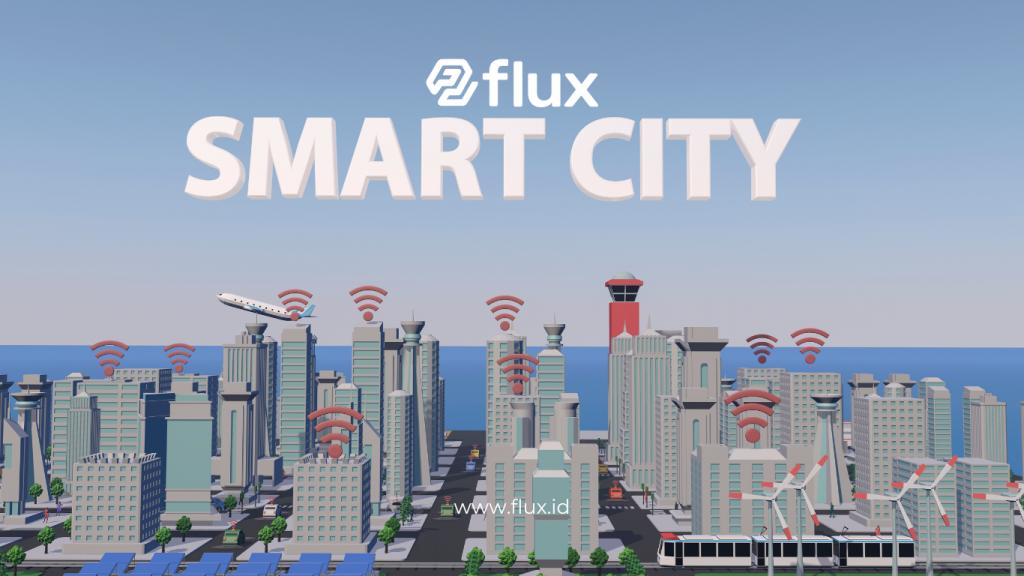Don't miss our holiday offer - 20% OFF!
Smart cities are modern urban concepts that integrate advanced technology to improve the quality of life. Utilizing the Internet of Things (IoT), Artificial Intelligence (AI), and data analytics, smart cities create a more efficient, safe, and eco-friendly urban ecosystem.
The purpose of smart cities is to provide an easier, safer, and more comfortable life. This article will discuss the key elements of smart city infrastructure, the technology used, its benefits, and the challenges of implementation.
Contents
1. Key Components of Smart City Infrastructure

Read More: Smart City: Technological Solutions for Better Urban Living
To realize a smart city, several key components need to be considered:
1.1. Smart Transportation System
Smart transportation utilizes sensors, AI, and real-time traffic management systems to reduce congestion, increase safety, and facilitate better mobility.
- Smart Traffic Lights: AI-based traffic lights that automatically adjust their timing according to traffic volume.
- Integrated Public Transportation: Real-time bus and train arrival information accessible via applications.
- Autonomous Vehicles: Self-driving cars that use AI and sensors for navigation.
1.2. Smart Energy Management System
Smart energy management enables cities to use energy resources more efficiently.
- Smart Grid: An intelligent electricity grid that allows real-time energy management based on demand.
- Renewable Energy Utilization: Utilization of renewable energy sources such as solar and wind power.
- Household Energy Consumption Management: Smart applications enable citizens to monitor their household energy consumption in real time.
1.3. Smart Security and Surveillance System
Security is a top priority in the smart city concept. Smart surveillance technology aims to create a safe environment for residents.
- AI-Based CCTV Cameras: Surveillance cameras capable of detecting suspicious behavior and providing early warnings.
- Early Warning Systems: Detection sensors for fire, floods, and earthquakes.
- Drone Surveillance: Real-time city monitoring using drones.
1.4. Waste and Environmental Management
Smart waste management aims to create a cleaner and more sustainable environment.
- Smart Waste Management Sensors: Trash bins equipped with sensors to detect when they are full.
- Clean Water Management: Water quality monitoring systems using IoT-based water quality sensors.
2. Key Technologies in Smart City Infrastructure

Read More: Smart City and the Future of Urban Areas: Optimizing Infrastructure with Smart Technology
Technology plays a crucial role in the development of smart city infrastructure. Below are some key technologies:
2.1. Internet of Things (IoT)
IoT enables devices such as sensors, cameras, and other tools to connect to the internet for data sharing.
2.2. Artificial Intelligence (AI)
AI assists smart cities in data-driven decision-making processes, such as traffic control and security monitoring.
2.3. Big Data and Data Analytics
Data from various sensors in smart cities are analyzed using big data analytics to provide useful information for city management.
2.4. Cloud Computing
Cloud technology enables more efficient storage and processing of city data.
3. Benefits of Smart City Infrastructure

Read More: Guide to Building a Smart City: Digital Transformation for a More Efficient City
The development of smart city infrastructure offers numerous benefits, including:
- Energy Efficiency: The use of smart grids and household energy consumption management reduces energy wastage.
- Safety and Security: AI-based surveillance helps with early detection of crimes and disasters.
- Improved Mobility: Smart transportation systems improve traffic efficiency.
- Effective Waste Management: Smart waste sensors enhance the efficiency of waste management.
4. Challenges in Implementing Smart Cities

Read More: Optimizing Public Services with IoT Technology in the Smart City Era
Despite the many benefits, there are several challenges that need to be addressed:
4.1. High Implementation Costs
Infrastructure, IoT devices, and large-scale data management require significant investment.
4.2. Data Privacy and Security
With vast amounts of data being collected, protecting personal data and cybersecurity becomes a priority.
4.3. Dependence on Technology
Smart cities are heavily reliant on advanced technology, and any disruption can impact daily operations.
4.4. Digital Divide
Not all citizens have equal access to smart technology.
Conclusion
Smart city infrastructure is a significant step toward a better future. By utilizing advanced technologies such as IoT, AI, and big data, smart cities offer convenience, security, and efficiency in everyday life. While there are some challenges in implementation, the benefits of smart cities far outweigh the drawbacks. Governments and communities must work together to create a smarter and more environmentally friendly urban ecosystem.





